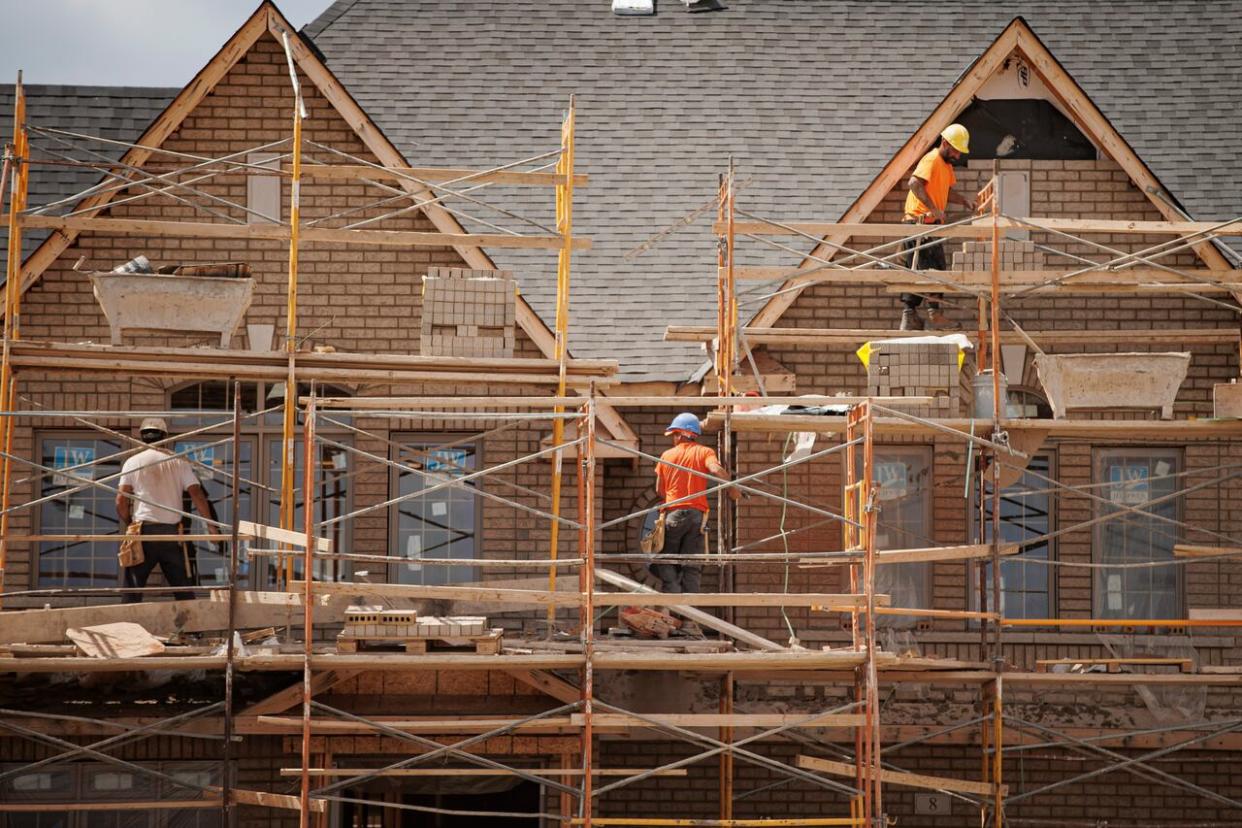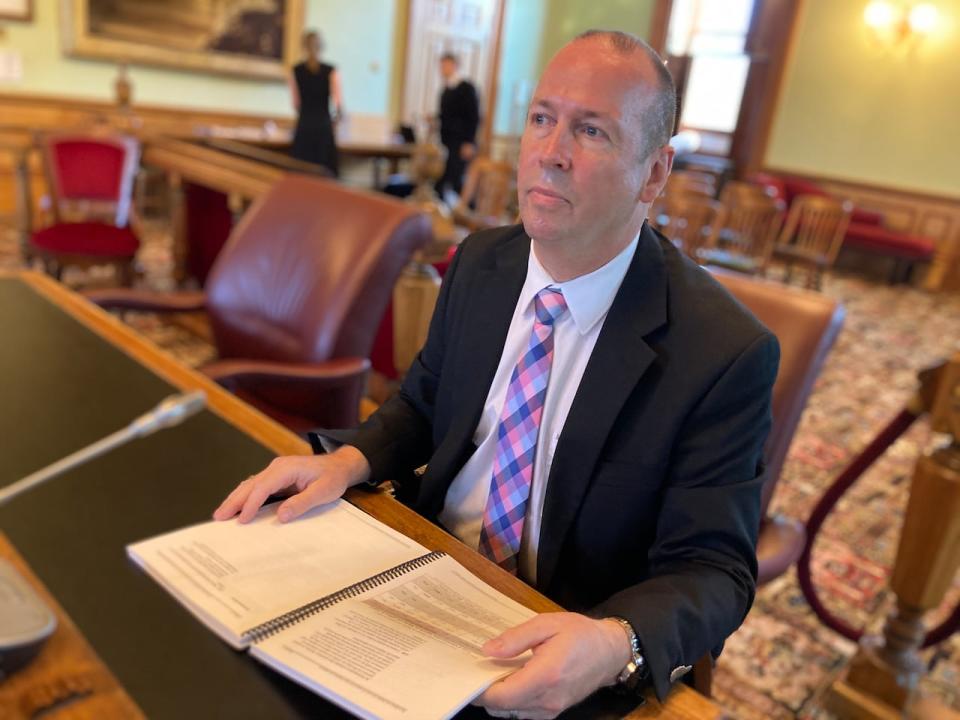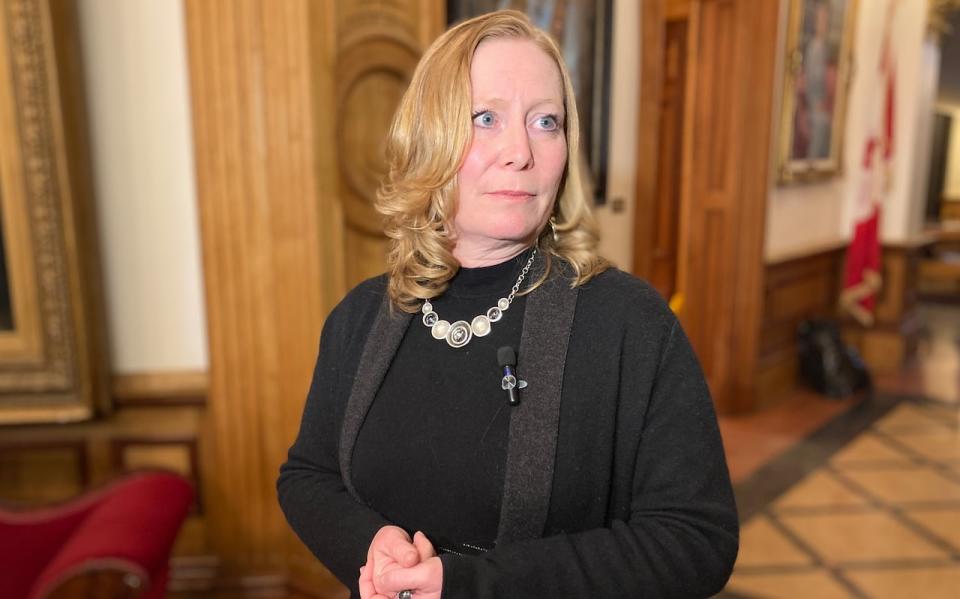Transparency lacking in N.B. housing strategy, auditor general says

Key elements of New Brunswick's strategy to encourage the development of 6,000 new homes per year lack transparency, including around the timelines for achieving specific objectives and the total cost of some of the projects, says the province's auditor general.
Part of Paul Martin's report zeroed in on the New Brunswick Housing Corporation's implementation of the N.B. Housing strategy, which was released last June by Jill Green, minister responsible for housing.
"Fifty per cent of the actions [in the strategy] had no noted cost to government," said Martin, speaking before the legislature's standing committee on public accounts.
"For example, the action to recruit and or pre-qualify 10,000 individuals in priority trade occupations, to support immigration to New Brunswick, had no program costs or housing solution to the immigrants included in the strategy."

Auditor General Paul Martin told MLAs Tuesday that the New Brunswick Housing Corporation hasn't laid out the costs associated with key parts of its strategy, such as the province providing surplus property for affordable housing development. (Jacques Poitras/CBC)
The three-year, $551-million strategy includes the goals of encouraging the creation of 6,000 new homes per year, reducing the waitlist for subsidized housing by 3,000 households, and increasing the number of skilled trades for residential construction by seven per cent annually.
It also aims to create conditions to hold annual rent increases at an average of 2.5 per cent and the percentage change in average home prices to 4.8 per cent.
The strategy was released as the provincial government's response to New Brunswick's housing crisis, brought on by rapidly rising rents, home prices and record-low residential vacancy rates.

Jill Green, New Brunswick's minister responsible for housing, released her government's strategy last June for alleviating the province's housing crisis. The New Brunswick Housing Corporation was formed with the mandate to implement that strategy. (Jacques Poitras/CBC)
The New Brunswick Housing Corporation was established in 2023 to carry out the strategy's 22 action items, and its budget was funded through transfers from the Department of Social Development, the Department of Transportation and Infrastructure and Service New Brunswick.
Martin, in his report, said the housing corporation has established targets and measurable actions within the strategy, but needs to make clearer the links between its actions and its stated goals, as well as transparency, monitoring and reporting on its progress.
On transparency, Martin said most of the actions were measurable, had been clearly assigned to executives at the housing corporation and had their sources of funding identified. However, 16 of the 22 actions had no timeline for completion.
Additionally, 11 of the 22 actions had no specific overall cost to government.
One of those was the province extending temporary property tax relief to landlords by limiting assessment growth for tax purposes by 10 per cent for eligible non-residential properties and apartment buildings with more than four units.
Another was the province's commitment to make government surplus property available for affordable housing development.
"In some cases, program details were not sufficient to determine if the funding was going to be a loan, forgivable loan, or non-repayable grant," Martin said.


